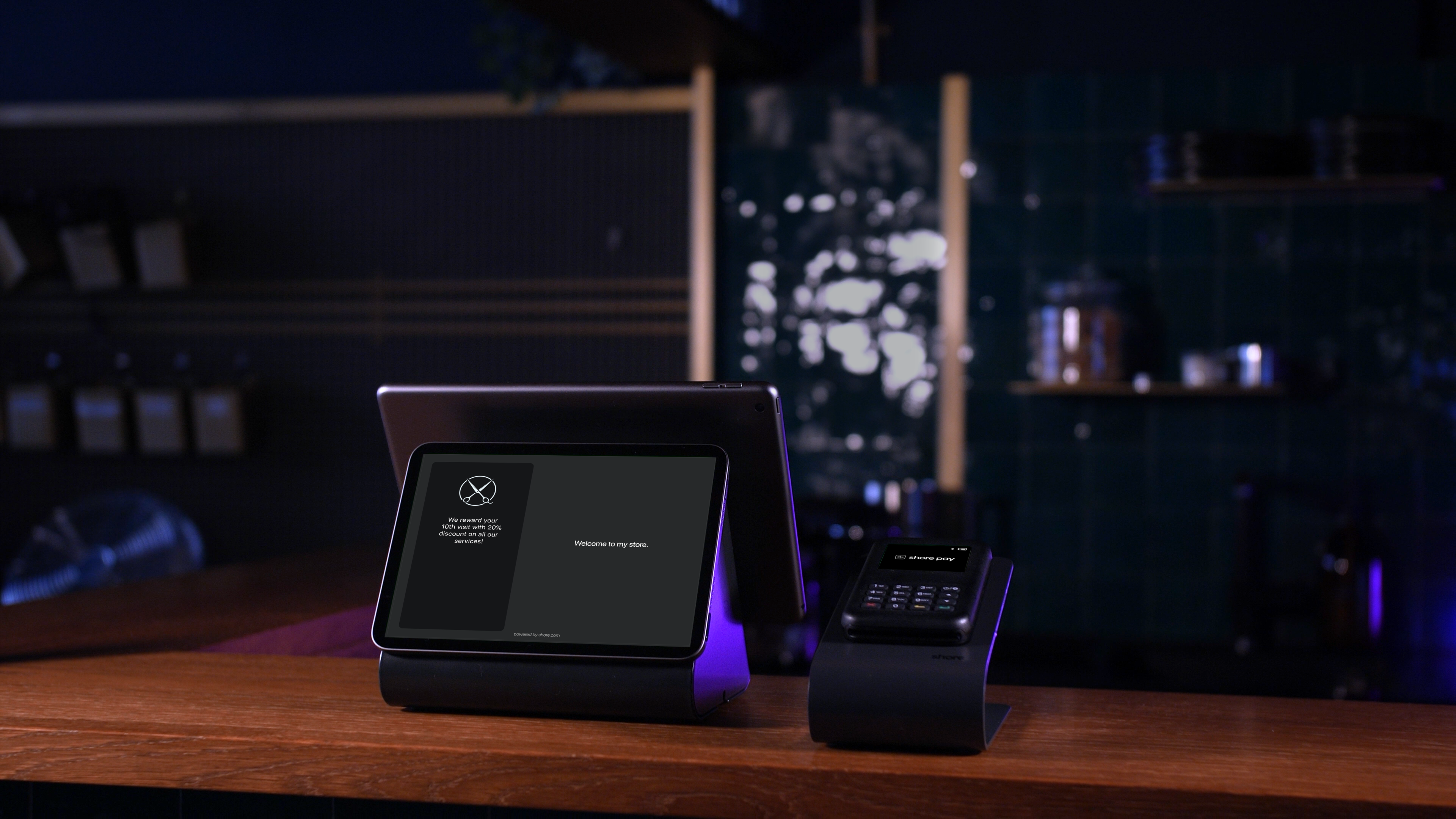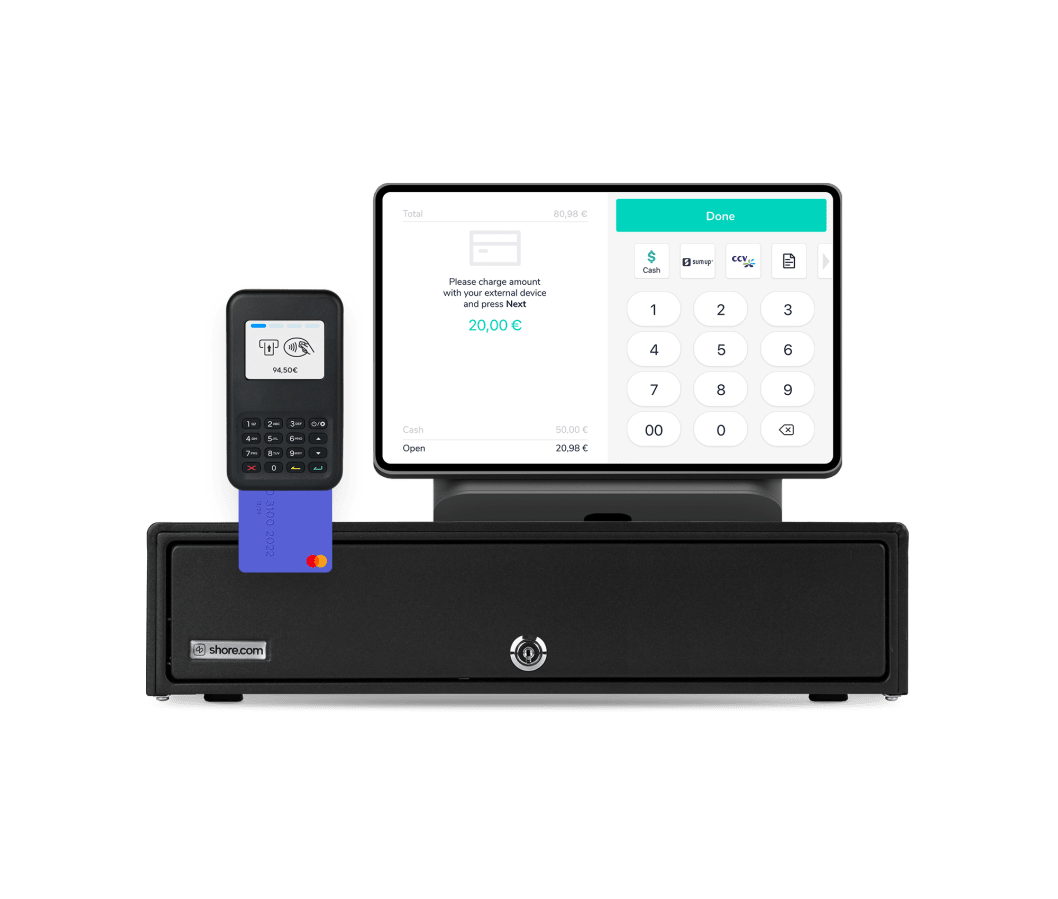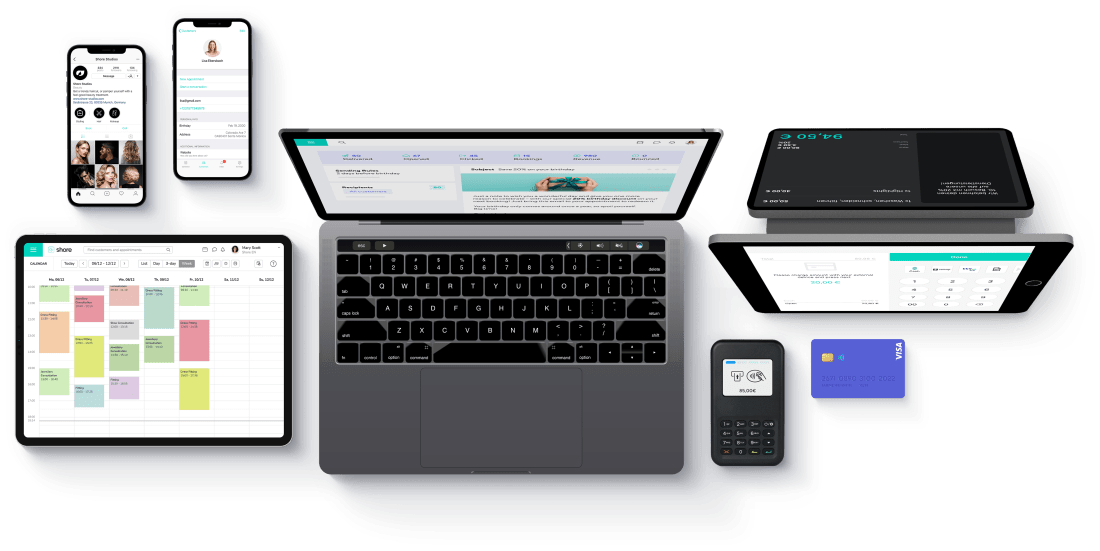Our ambition. Your success.
We make your business life digital and paperless, so you have more time for your passion.
Get your free trial





Is Shore worth it for me?
Calculate without stress and with just a few clicks how you and your business can benefit from Shore.
Make payment easy
Forget piles of paperwork. Shore POS makes payment simple, fast and reliable. Offer your customers all standard forms of payment and digitally manage your product inventory. You're going to love how Shore's digital accounting saves you time and headaches. It's in full conformity with all financial and tax regulations, and 100% secure.
Learn more

Receive safe, easy payments
Offer your customers all common payment forms - debit, credit, and contactless with their smartphone. Shore Pay gives your customers a great selection: our mobile card reader accepts all common credit and debit cards. Your customers can also pay using Apple or Google Pay on their smartphone.
Learn moreBooking an appointment has never been simpler
Your customers can pick an available appointment 24/7 and book it on your web site, Instagram, Facebook, and even directly in their Google search. With Shore's calendar, you'll never lose track of your customer appointments and information -- even while you're on the go.
Learn more

Boost your customer relationships
Want to organize your customer information and notes in a snap? Shore's customer management software makes it a breeze. Track your customers' individual preferences and what they like, and keep them coming back.
Learn moreMarketing that works
Our newsletter editor makes it easy to generate the exact e-mails you want. Create the perfect offers and sales, welcome new customers, reward your regulars with special discounts, wish customers happy birthday, and much more.
Learn more




Find the right solution for your business
More than 9,000 businesses and retailers run on Shore.
Write your success story with us today.
Do you want to get to know Shore?
Get in touch with us for your very own consultation with a Shore team member, or get started straightaway!
Your personal consultation
- Check out all Shore product features
- Custom made for your business
- Personalized consultation for you and your team



Free 14-day trial
- No payment information required
- No installation necessary
- Free 14-day trial ends automatically




